Since I first wrote about the Ladybird books obsession with modernism (
article here) I've become increasingly fascinated by the role they played in fostering a spirit of excitement in Britain's postwar schemes to modernise. Picking up copies in second hand bookshops I've started to see a much more concerted effort to portray a positive image of the rebuilding of Britain in these books than even I'd given them credit for. With their warm and sensible illustrations and no-nonsense prose, Ladybird has an incredible knack of bringing together the historical and the contemporary, the fairy-tale and the starkly realistic, taking the fear out of everything and showing a unified, positive and optimistic vision of life. And so this selection of images portrays a top ten in that mould:
The Ladybird Book of Postwar Rebuilding.
 |
| 1. Prefabs. From the wartime temporary housing programme to the building of the welfare state, prefabrication was a big story in rebuilding. Here's a school from People at Work: The Builder (1965) illustrated by John Berry. |
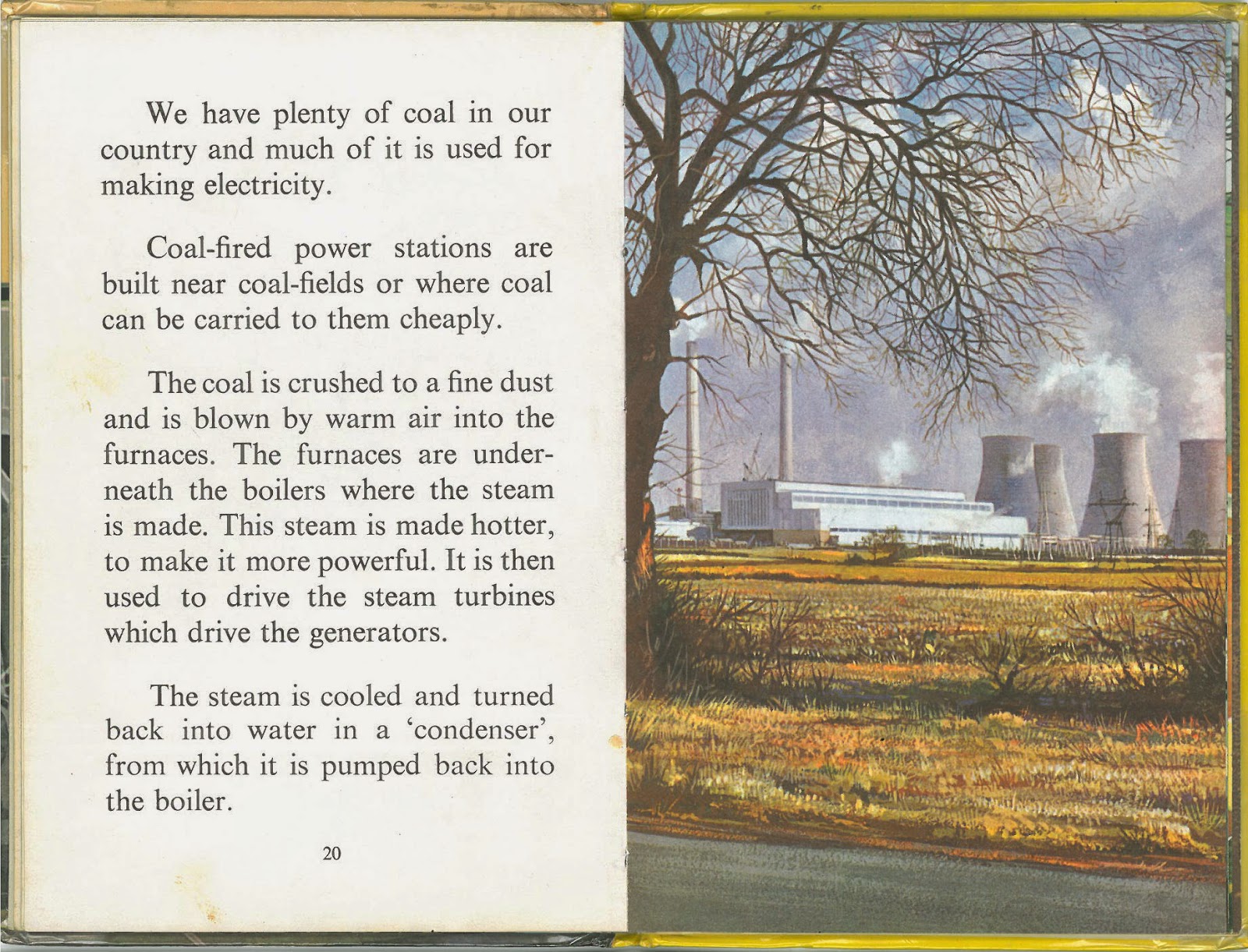 |
| 2. This is a classic Ladybird image, marrying pastoral and progress: a coal fired power station. It's from The Public Services: Electricity, artwork by John Berry (1966). |
 |
| 3. Hello 1950s low rise office building! Soon to be dwarfed by high rise 60s office building... Another great image from People at Work: The Builder (1965) illustrated by John Berry. |
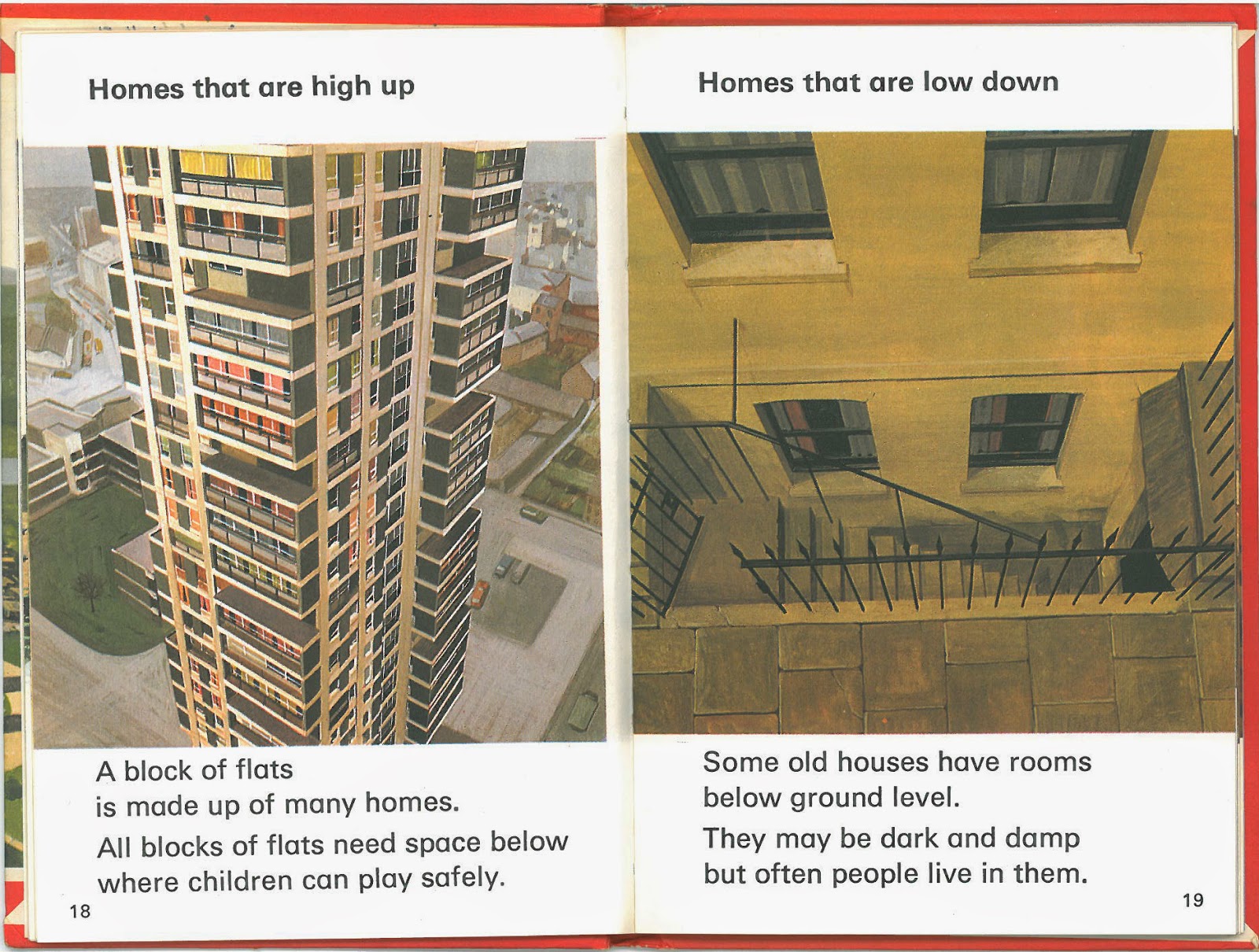 |
| 4. Here's a fearless bit of Brutalism, and a style of high rise flats recognisable from cities all over Britain. The text in this book, Homes (1975) is pretty grim for a Ladybird book (on basement flats: 'they may be dark and damp but people often live in them') but Bernard Robinson's beautiful paintings maintain a standard. |
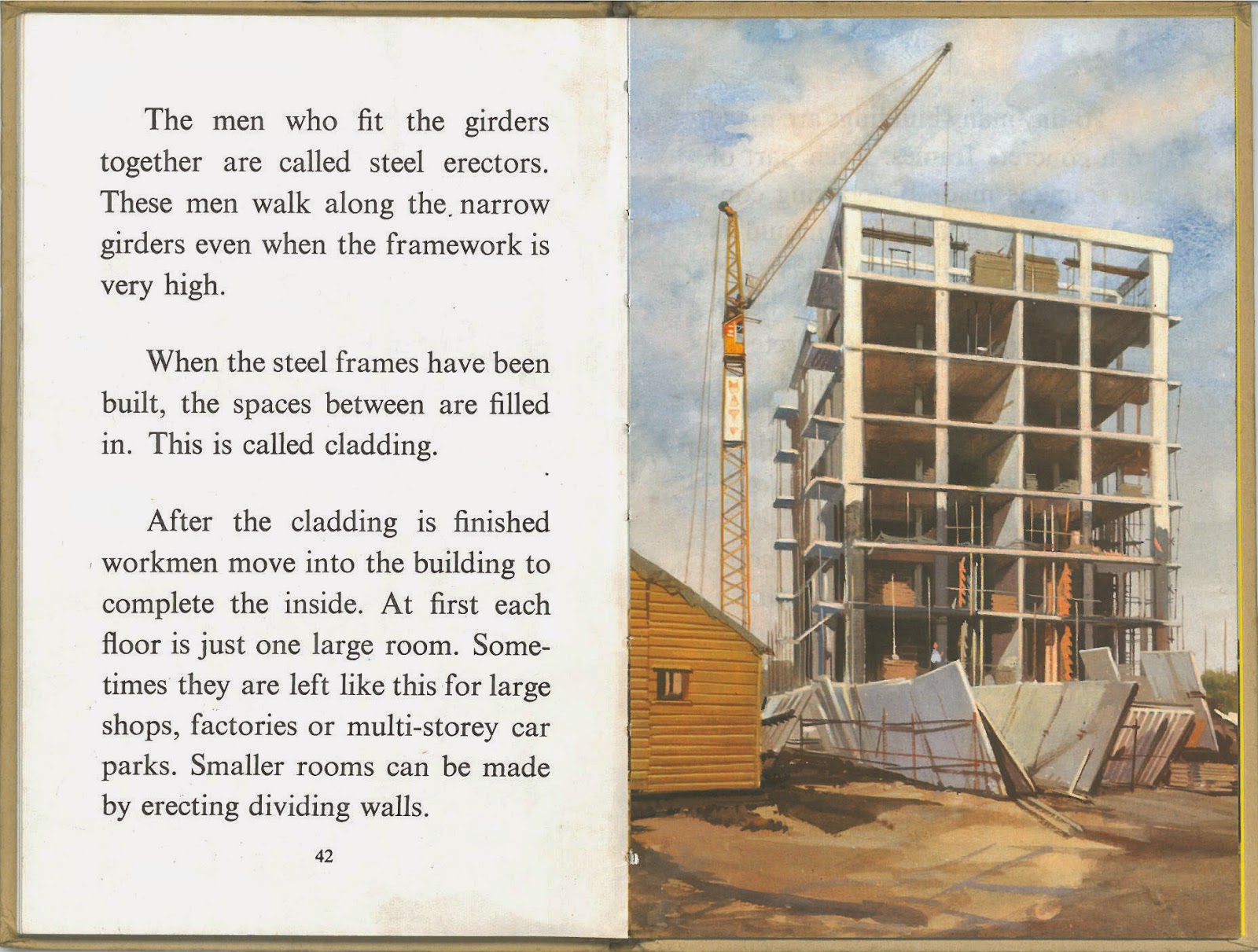 |
| 5. The concrete frame! It's Ladybird does Le Corbusier. These books love to show how things are made, and this is amazing. Another classic from People at Work: The Builder (1965) illustrated by John Berry. |
 |
| 6. Here we have a point block, that Swedish design so gleefully adopted by local councils in Britain to meet housing demand. I love the text on this page as much as the illustration, which is about the most joyous representation of council housing you could imagine. This is from The Story of Houses and Homes, artwork by Robert Ayton, 1963. |
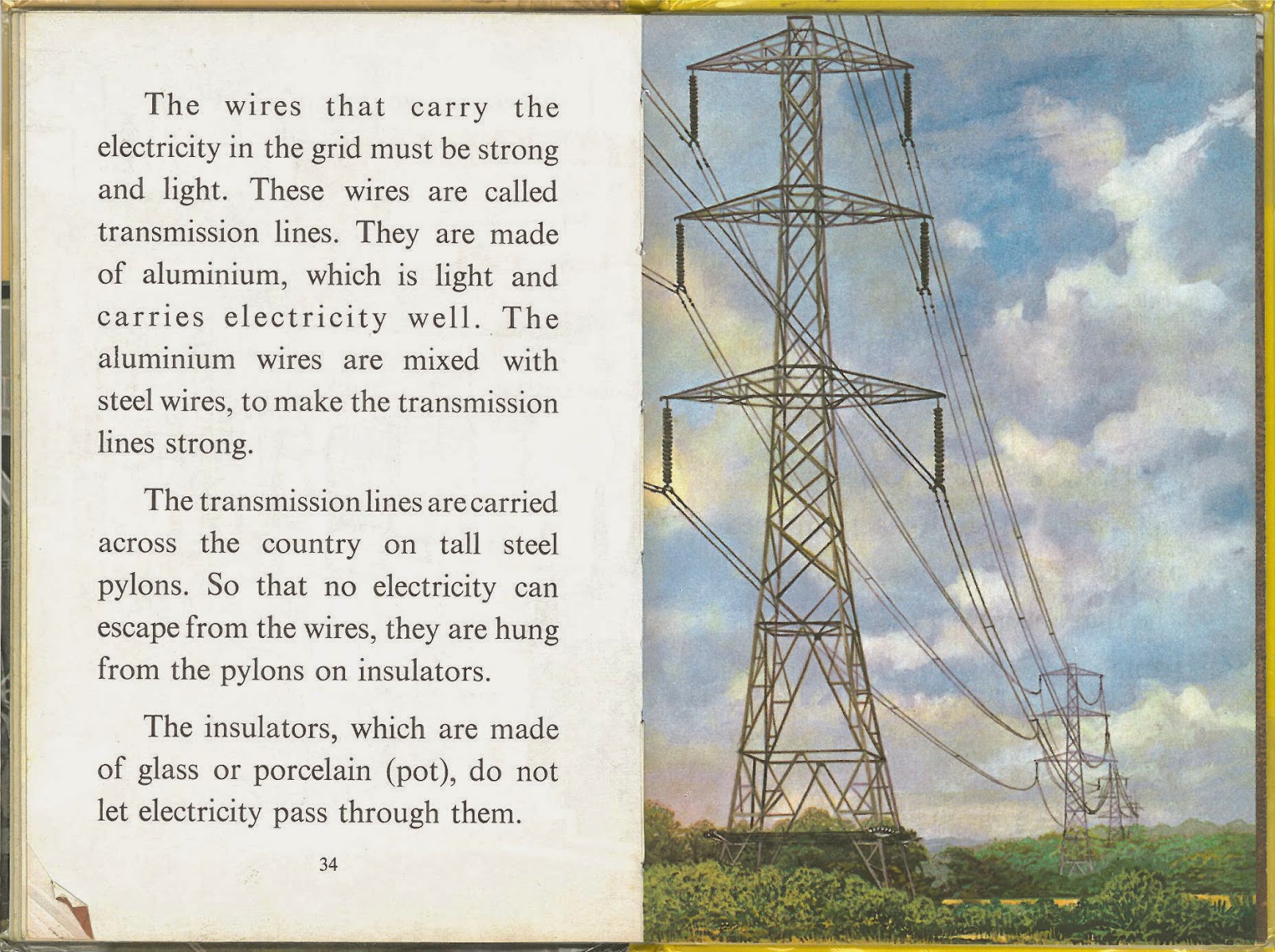 |
| 7.
Pylons are always on hand in fiction and photography to represent the
march of progress across a landscape, so why not in Ladybird too? This is from The Public Services: Electricity, artwork by John Berry (1966). |
 |
| 8. Here's the man (and in Ladybird's world, despite the amount of women architects there were, this was always going to be a man) drawing up these plans for the modern world. You can tell it's the modern world because of the flat roof. People at Work: The Builder (1965) illustrated by John Berry. |
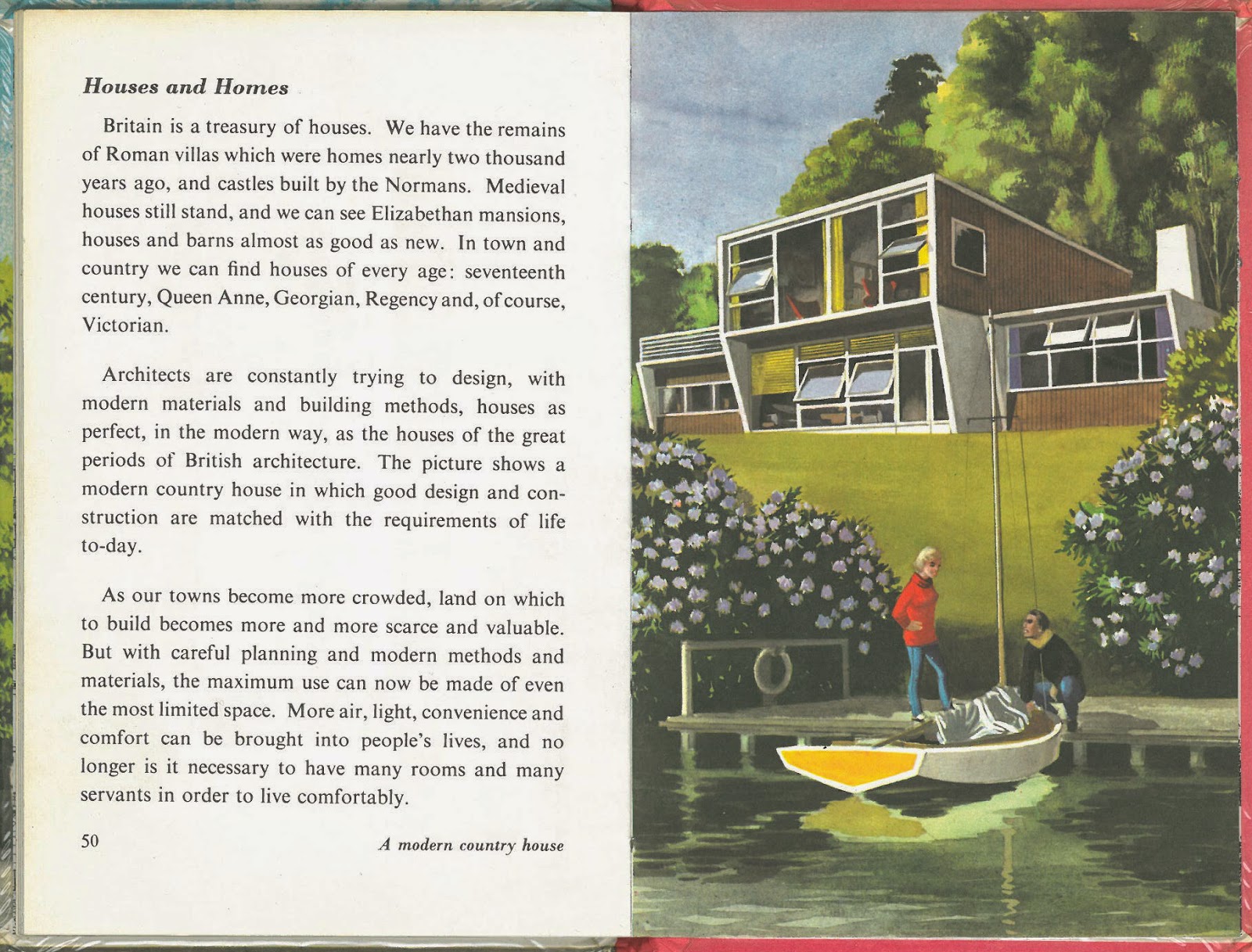 |
| 9. And what could be more idyllic than this swanky architect designed house, a cross between Swallows and Amazon and North by Northwest. From The Story of Houses and Homes, artwork by Robert Ayton, 1963. |
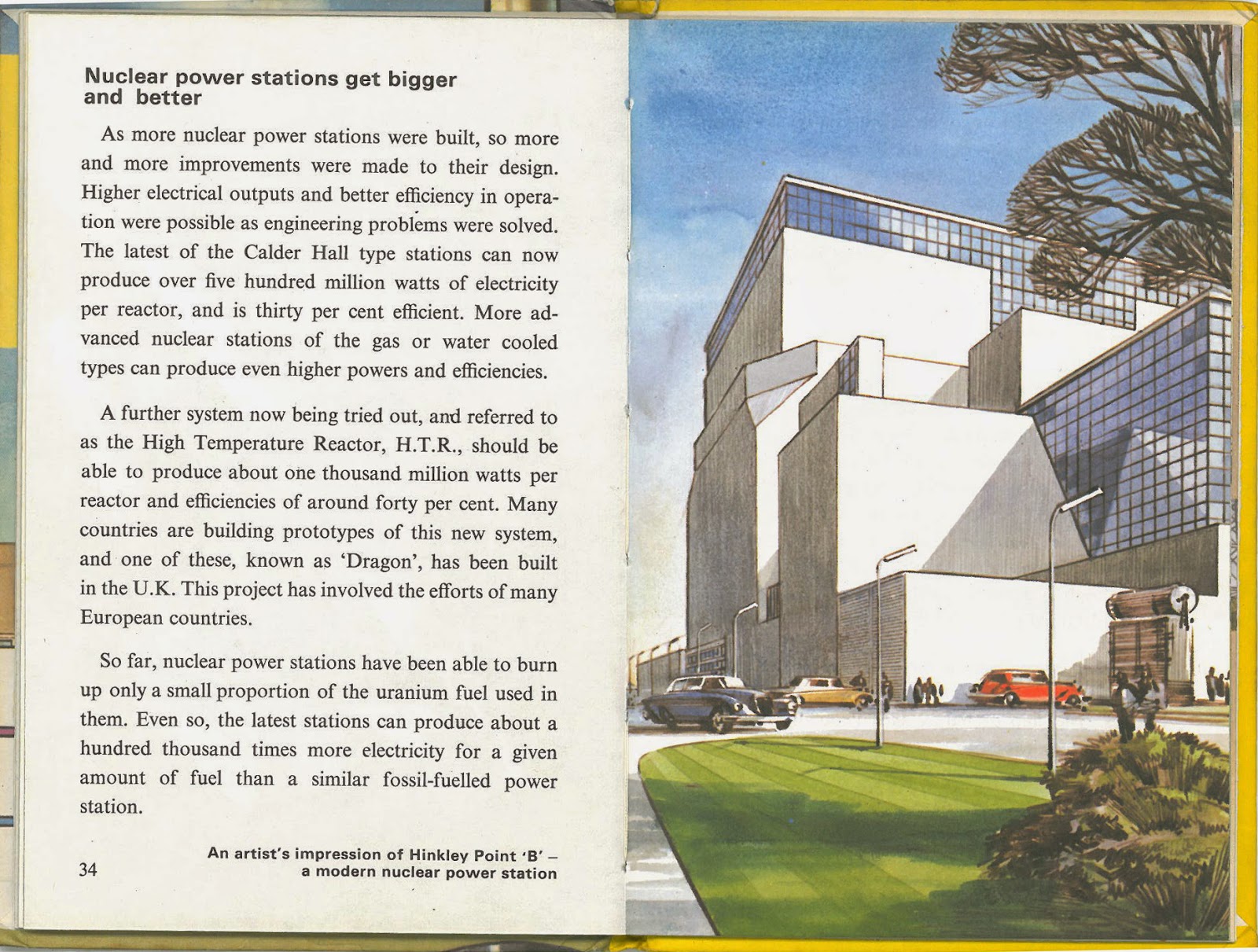 |
| 10. And here we have a nuclear power station! Nuclear physics held no fear for Ladybird, where the atom was our friend. This is from the bafflingly ambitious The Story of Nuclear Power, artwork: Robert Ayton, 1972. |
Read the first part of my Ladybird odyssey
here and the concluding episode
here.











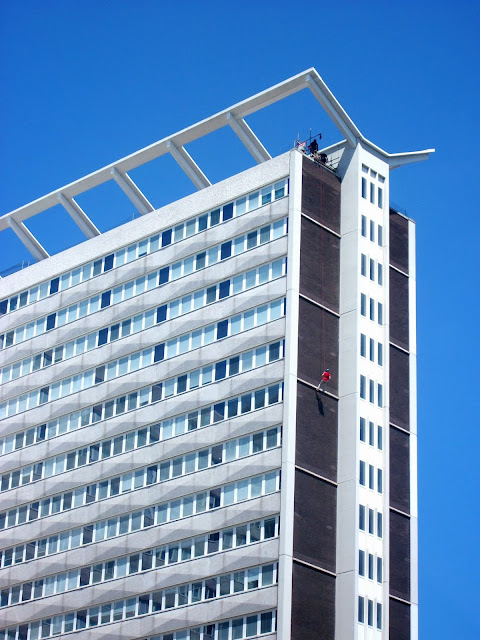


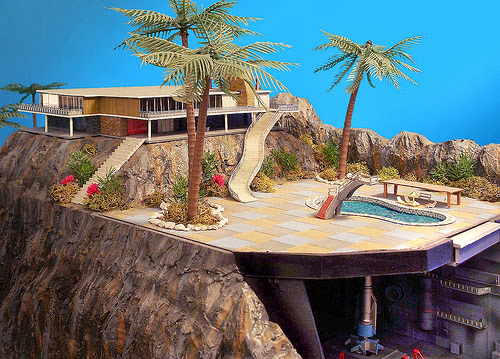


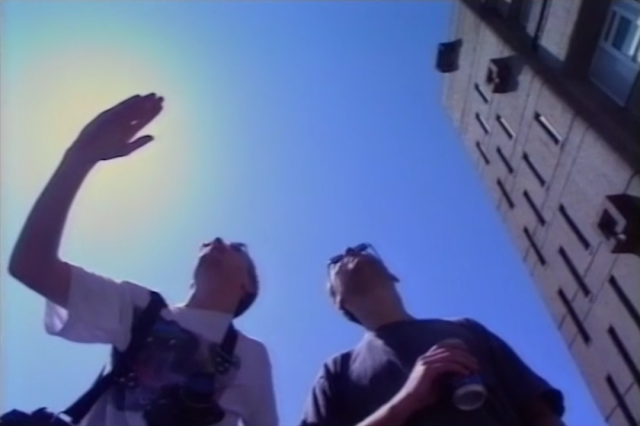


The energy, the faith, the devotion! I grew up with this stuff, it all defines my attitude to society today. Robert Ayton is one of the great, unsung British illustrators. His paintings for the Ladybird Book of The Weather is my particular favourite. Great post!
ReplyDeleteThanks Ian. I just adore these artists, working in the tradition of the kind of poster art the railways had been using for decades. I have a special fondness for Bernard Robinson, as he's from Croydon, but I agree, Ayton's work is sublime.
DeleteAnother fabulous selection, John. The stock of old Ladybirds in your area is much more inspiring than anything I've been able to dig up in this (overpriced) corner of west London. I think No. 9's house by the lake is my favourite. A nice touch having that Hitchcock blonde in the picture . . .
ReplyDeleteI have cheated and used Abe Books to fill gaps... They're pretty cheap on there. I want to live in that house by the lake, and yes, that's Eve Marie Saint there, isn't it?
DeleteI'm re-entering this correspondence over a year later after reading the current (Nov 2015) correspondence in the Daily Telegraph letters page also singing the praises of Ladybird books on people at work. My own favourite Ladybird book is "How it works - Television" (1968). Not only does it explain simply the complexities of the electron gun camera, what sound is and how it is converted into electrical signals, and scanning and transmitting both of these, but it has a superb perspective drawing of Television Centre, which has added poignancy now it has largely disappeared. When I worked for the BBC I used to give this book to friends, colleagues and trainees. It's still as good a summary of the whole process of analogue television that I have ever seen.
DeleteI think the People at Work books are my absolute favourite Ladybird books, and I adore John Berry's style. But How It Works are great too. Television is particularly good, isn't it? Even though it blows the secret of people miming on Top of the Pops! And yes, it's particularly poignant now. So glad there are other enthusiasts out there.
DeleteThis comment has been removed by a blog administrator.
ReplyDeleteThe downside of the prefabricated schools are the flat roofs. The teacher in the classroom adjacent to mine had a waterfall running down his display boards during winter time. We were actually studying river features at the time so he used it as part of his lessons.
ReplyDeleteEven back then, Ladybird praised flats with barbed compliments at best. Phrases like 'when planned carefully...' and acknowledging that children need somewhere to play. They should have, of course, stated that flat are quite unsuitable for families with children. Such families live in flats today during the current lockdown.
ReplyDelete